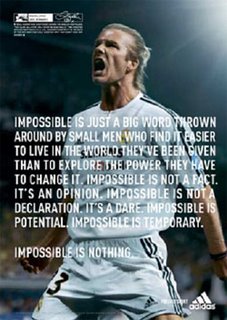Oh Comely: Representation Blog Tasks
1) How do representations in Oh Comely challenge stereotypes?
The representation of women in Oh Comely challenges the stereotype of how women are typically portrayed in the media. Women in the media are usually presented in a manner which reinforces the male gaze - women are typically objectified and sexualised for the view of men. In Oh comely women are showed in a more androgynous way and are portrayed in a more natural state rather than a forced identity.
2) What representations of race, ethnicity and nationality can be found in the 'Speaking Out' feature?
BAME ethnic groups are represented mainly in the Speaking Out section of the magazine which positively highlights minorities who do not usually get any positive recognition in the media.
3) What representation of women and femininity can be found in Oh Comely?
3) What representation of women and femininity can be found in Oh Comely?
Oh Comely focuses on empowering women and showing how successful women can really be which is constructed through the specific imagery and content used in the magazine. The "More Than Gender" interview also captures this - focuses on the idea of mental health and identity issues and how overcoming it can be a difficult journey because these individuals are going against social norms regarding gender and masculinity/femininity
4) Why might Oh Comely deliberately under-represent men? (The absence of men in the magazine appears to be a largely deliberate move by the editors).
The deliberate absence of men in the magazine is to keep focus on the empowerment of women and bring attention to a group of people who do not get much recognition in broad/mainstream media.
5) Does Oh Comely fit into the possible fourth wave of feminism? Or is it evidence of post-feminism - that feminism is no longer needed?
I think that Oh Comely fits into the fourth wave of feminism to some degree. This is because it incorporates the use of social media throughout the magazine by adding the tags of the inspirational women, so that consumers can be contacted.The women also use social media to campaign and raise awareness on issues such as FGM etc.
6) How does the 'More than gender' feature challenge Levi-Strauss's structuralist theory of binary opposition?
Highlights the fact that gender is not a fixed or binary concept. It can change and our identities can be constructed by us (Gauntlet). Our identities change as we change.7) Judith Butler argues gender is a performance. How does Oh Comely challenge traditional gender roles? You should refer to both the cover and the selected CSP features.
8) Angela McRobbie explored the empowering nature of women's lifestyle magazines in the 1990s. Oh Comely seeks female empowerment in a different way. What differences can you find between Oh Comely and more traditional women's lifestyle magazines such as Cosmopolitan or Glamour?
Oh Comely features women who have done individual tasks to help change the world and promote feminism. Each of these women featured are used in order to help influence and inspire other reader to go out and do the same. Oh Comely doesn't objectify their models or features whilst other magazines such as Cosmopolitan and Glamour may do so and still feature topics which are about physical appearance and how to improve it.
9) David Gauntlett argues that identity is becoming more fluid, media representations change over time and that there are generational differences. Does Oh Comely support this viewpoint?
The model on the front cover can help reinforce David Gauntlett's statement the model is seen to have short hair tied back with very minimal makeup, supporting the 'natural' look which the magazine pushes for other women to do. The feature 'More then Gender' also reinforces this as the article is about gender fluidity and how one person has experienced this and has changed genders.
10) It has been argued that Oh Comely is a far more open text (Stuart Hall - encoding and decoding) with more room for negotiation in interpretation. Do you agree with this view? Why?
The magazine is very open about niche topics such as gender fluidity and talks about them in a way which allows the reader to create their own opinion on the topic. The magazine intends to promote feminism and different topics throughout each release of the magazine and does so in a way which allows its readers to create their own understanding and interpretation of each topic without creating a bias representation in their articles and then therefore had a ability to reinforce a different reading on their work based on how they are willing to a different interpretation in a different way.

Comments
Post a Comment